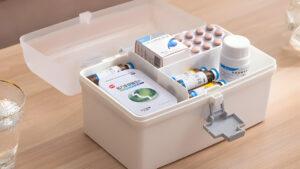Introduction
Medications play a crucial role in treating various medical conditions. However, the effectiveness and safety of a medication depend not only on the quality of the drug itself but also on its interactions with other medications you are taking. Drug interactions can cause unwanted side effects, reduce the effectiveness of your medications, or even endanger your health. This article details drug interactions, their resulting side effects, and how to minimize these risks.
Drug Interactions
Drug interactions occur when two or more medications react unexpectedly when taken together. These interactions can be divided into three main categories:
Pharmacokinetic Interactions
These occur when one medication affects how another medication is absorbed, distributed, metabolized, or excreted by the body. For example, some medications can inhibit the enzymes involved in the breakdown of another drug, causing it to accumulate in the body and increasing the risk of side effects.
Pharmacodynamic Interactions
These interactions happen when two medications with similar mechanisms of action are taken together. For example, taking two analgesics can increase the analgesic effect but also the risk of side effects such as drowsiness and constipation.
Drug-Food Interactions
Some drug interactions can occur when you take a medication with food or on an empty stomach. Some medications need to be taken with food to be effective, while others should be taken on an empty stomach. Not following specific recommendations can lead to inadequate absorption of the drug or increased effects.
Side Effects of Drug Interactions
The side effects of drug interactions can range from minor to very severe. Minor side effects may include headaches, nausea, or fatigue, while severe side effects can be life-threatening. Common side effects related to drug interactions include:
- Excessive Sedation: Certain drug combinations can cause excessive sedation, impairing activities like driving and normal functioning.
- Gastrointestinal Issues: Drug interactions can cause gastrointestinal problems such as constipation, diarrhea, stomach ulcers, and loss of appetite.
- Hepatic or Renal Toxicity: Some drugs are metabolized in the liver or excreted by the kidneys. Drug interactions can overload these organs, causing toxicity.
- Allergic Reactions: Drug interactions can cause severe allergic reactions such as hives, angioedema, and even anaphylactic shock.
- Cardiac Problems: Some drugs can affect your heart rate and blood pressure, leading to potentially fatal cardiac complications.
Risk Factors for Drug Reactions
Several factors can increase the risk of drug interactions and side effects. To minimize potential risks, consider the following factors:
- Taking Multiple Medications: This factor significantly increases the risk of interactions. The more medications you take, the more important it is to monitor potential interactions closely.
- Patient’s Age: Elderly individuals are at higher risk of drug interactions due to metabolic changes and the frequent use of multiple medications for chronic conditions.
- Underlying Medical Conditions: Conditions such as kidney or liver insufficiency can affect how your body metabolizes medications, increasing the likelihood of interactions.
- Medical Advice: Be honest with your doctor about all the medications you are taking, including over-the-counter drugs, supplements, and herbal remedies.
How to Minimize the Risk of Drug Interactions
To minimize the risk of drug interactions or side effects, you can take the following measures:
- Consult Your Doctor: Inform your primary care physician about all the medications you are taking, including prescription drugs, over-the-counter medications, supplements, and herbal remedies.
- Use the Same Pharmacy: Using the same pharmacy for all prescriptions allows pharmacists to better monitor potential interactions and provide appropriate advice.
- Read Medication Labels Carefully: When you get a new medication, read the label carefully to understand how to take it, whether it should be taken with food, and if there are any warnings about interactions.
- Monitor for Side Effects: Watch for signs of side effects, such as skin rashes, unexplained pain, bleeding, or gastrointestinal issues. Report any side effects to your healthcare professional immediately.
- Utilize Technology and Online Tools: There are online tools and mobile apps available to check for potential drug interactions. However, these tools should be used for informational purposes only and not as a replacement for professional medical advice.
Conclusion
Drug interactions and their side effects are significant health concerns. To use your medications safely and effectively, it is important to communicate openly with your doctor, read your medication labels carefully, and monitor for signs of side effects. Managing drug interactions can be complex, but by taking appropriate precautions, you can minimize risks and maximize the benefits of your treatment. Your health requires special attention, so take your medications diligently and responsibly.




